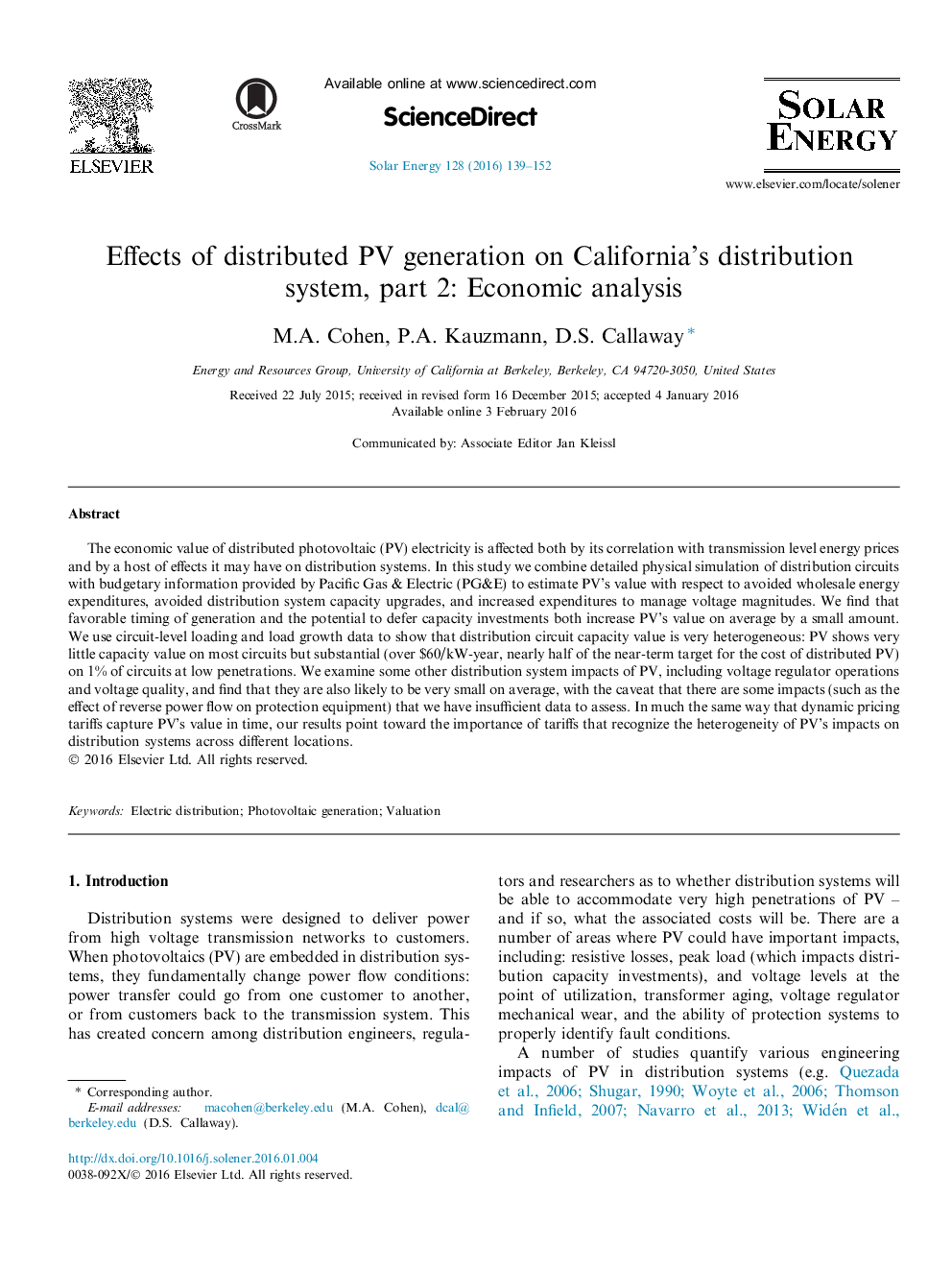| Article ID | Journal | Published Year | Pages | File Type |
|---|---|---|---|---|
| 1549467 | Solar Energy | 2016 | 14 Pages |
Abstract
The economic value of distributed photovoltaic (PV) electricity is affected both by its correlation with transmission level energy prices and by a host of effects it may have on distribution systems. In this study we combine detailed physical simulation of distribution circuits with budgetary information provided by Pacific Gas & Electric (PG&E) to estimate PV's value with respect to avoided wholesale energy expenditures, avoided distribution system capacity upgrades, and increased expenditures to manage voltage magnitudes. We find that favorable timing of generation and the potential to defer capacity investments both increase PV's value on average by a small amount. We use circuit-level loading and load growth data to show that distribution circuit capacity value is very heterogeneous: PV shows very little capacity value on most circuits but substantial (over $60/kW-year, nearly half of the near-term target for the cost of distributed PV) on 1% of circuits at low penetrations. We examine some other distribution system impacts of PV, including voltage regulator operations and voltage quality, and find that they are also likely to be very small on average, with the caveat that there are some impacts (such as the effect of reverse power flow on protection equipment) that we have insufficient data to assess. In much the same way that dynamic pricing tariffs capture PV's value in time, our results point toward the importance of tariffs that recognize the heterogeneity of PV's impacts on distribution systems across different locations.
Related Topics
Physical Sciences and Engineering
Energy
Renewable Energy, Sustainability and the Environment
Authors
M.A. Cohen, P.A. Kauzmann, D.S. Callaway,
